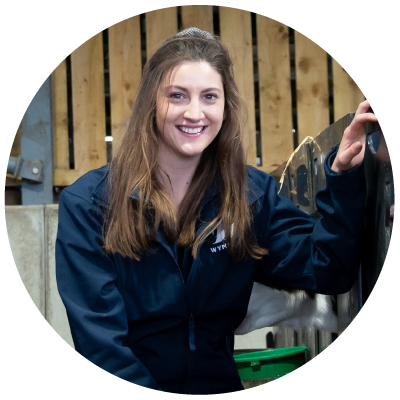Calving is a stressful time for both cow and calf. This can suppress a cow’s immune system and calves are born without any immunity leaving them both susceptible to infections. One of the key ways in which to minimise health risks and optimise health and performance (for both cow and calf) is to assess hygiene in and around the calving pen.
Read more: 5 things you need to know about calf housing requirements
Whether cows calving in individual or group pens, good hygiene should always be mandatory for your calf pens. This will help reduce naval infections, joint ill and reduce risk of scours for calves as well as help to reduce mastitis and uterine infections in the cow, allowing her to be more productive in the following lactation.
Read more: Offset housing challenges with attention to detail
How often should you be cleaning the pens?
In-utero, the calf is in a clean and sterile environment. Once calved, it enters a whole new environment which can harbour plenty of potentially harmful bacteria and pathogen.
In the ideal world, calving pens would be cleaned and disinfected after every single calving to prevent disease transmission. However, this is not always a practical option, whether space, time or labour etc; therefore, it is important to develop a hygiene cleaning protocol for your own farm, i.e after every 3-5 calvings pens are deep cleaned and disinfected.
What is the health status of the cows in the shed?
It is important to know the health status of each cow before they enter the calving pen, particularly, we focus on Johnes.
Best practice would have cows which are identified as Johnes risks do not enter the calving pens and there is a designated calving area for these with separate protocols. However, where this is not possible, pens MUST be cleaned and disinfected between calvings.
Remember, when in group housing, any cow in that shed has the potential to infect any calf!
How regularly are the passage ways cleaned?
High traffic areas, such as feed passage or drinking areas, should be scraped out daily to reduce bacterial load.
What disinfectant do you use?
Not every disinfectant is created equal. It is important to consider what disinfectants you are using in the calving pen. I would recommend using a broad spectrum disinfectant here to tackle any disease present. It is important that disinfectants are used at the correct dilution rate as stated by the manufacturer.
Is your calving shed ventilated?
Ensuring cows are calving in well ventilated shed can help to reduce the bacterial number and survival time.
- 0.2-0.3m wide outlets and twice the size for inlets
- If natural ventilation isn’t possible then should look to install fans.










